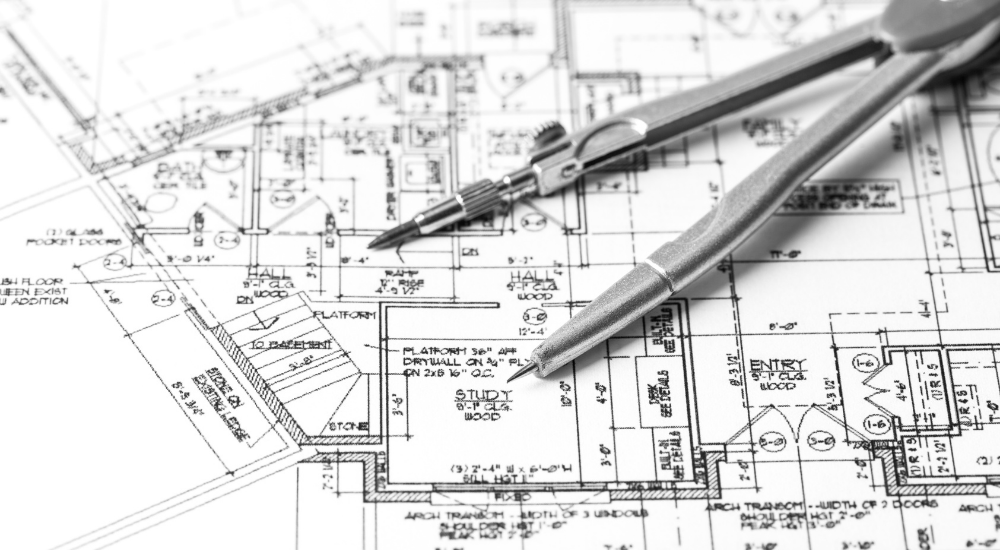Architect Guide to Sustainable Building Materials
Architect Guide to Sustainable Building Materials
Blog Article
Understanding the Diverse Career Paths Available for Aspiring Architect
As a hopeful Architect, you have a world of occupation paths waiting on you. Each course uses unique difficulties and opportunities to use your creativity and technical expertise. Whether you're drawn to standard architecture or the subtleties of sustainable layout, there's a specific niche that aligns with your passions. Understanding these diverse alternatives can shape your expert journey, but which instructions will you pick to explore initially?
Standard Style: Designing Frameworks and structures
Typical architecture concentrates on developing structures and structures that mix capability with visual allure. As you discover this area, you'll appreciate the detailed equilibrium in between form and purpose. You'll find out to attract inspiration from historic designs, integrating elements like proportion, materials, and craftsmanship. Your styles can show social heritage, showcasing local traditions while meeting modern-day demands.
You'll establish skills in drafting, model-making, and website evaluation, allowing you to visualize and connect your ideas efficiently. Engaging with clients, you'll need to understand their vision and equate it into possible designs.
Moreover, developing codes and sustainability practices are crucial in your work, guaranteeing your structures are risk-free and eco-friendly. As you expand in your profession, you'll find opportunities in household, business, or also remediation projects, each offering special difficulties. Accepting traditional style leads the way for a meeting profession that pays tribute to the past while shaping the future.
Urban Preparation: Shaping Areas and Public Spaces
As a hopeful Architect, you can play an essential duty as a metropolitan coordinator, changing just how communities connect and operate. By using community interaction methods, you'll ensure that locals have a voice fit their setting. And also, integrating lasting design concepts will certainly help produce rooms that not only satisfy today's needs however additionally protect the future.
Function of Urban Planners
While many might think of engineers as the single dreamers behind structures, metropolitan coordinators play a crucial duty in shaping the broader landscape of communities and public spaces. By teaming up with numerous stakeholders, you'll assist create parks, transport systems, and household areas that promote social interaction and ease of access. Your expertise in spatial style and neighborhood characteristics allows you to envision future growth while preserving social heritage.
Community Interaction Techniques
Effective area involvement techniques are crucial for metropolitan planners to ensure that the voices of locals are listened to and valued in the planning procedure. To promote significant discussion, you must prioritize open discussion forums and workshops where neighborhood members can share their concepts and problems. Use studies and social networks to get to a more comprehensive target market, guaranteeing varied perspectives are included. Teaming up with neighborhood organizations can enhance count on and help with deeper links. It's vital to give clear information about proposed tasks and decision-making processes, enabling residents to feel enlightened and empowered. By actively paying attention and incorporating responses, you'll create areas that reflect the neighborhood's demands, ultimately causing more effective and lasting urban atmospheres. Accept transparency and constant discussion for lasting effect.
Sustainable Design Principles
When developing urban rooms, integrating sustainable layout principles is essential for creating settings that prosper both ecologically and socially. Consider incorporating environment-friendly areas, like parks and gardens, to improve biodiversity and improve air top quality.
Designing with water preservation in mind is likewise essential-- consider rain gardens and absorptive surfaces to manage stormwater. Entailing neighborhood members throughout the planning procedure assurances that the spaces you develop meet their requirements and urge social interaction. By welcoming these principles, you'll add to vivid, sustainable urban landscapes that benefit everyone.

Landscape Architecture: Developing Sustainable Outside Atmospheres
As you check out landscape architecture, you'll uncover crucial style principles that develop lovely and practical outside spaces. Lasting practices play a vital function in ensuring these settings flourish while minimizing ecological impact. And also, you'll find a range of career possibilities that allow you to make an actual difference in exactly how individuals engage with nature.
Design Principles in Landscape
Understanding style concepts in landscape design is crucial for producing lasting outside settings that harmonize with nature. You'll require to ponder aspects like percentage, scale, and balance to assure your styles really feel natural and inviting. Incorporating native plants not just improves biodiversity however additionally reduces water usage, making your landscape durable. Assume about the flow of area and just how individuals communicate with it; paths and seating locations must welcome expedition and leisure. Additionally, take notice of seasonal adjustments, making with materials that complement the surroundings year-round (Architect). By prioritizing sustainability and aesthetics, you can create outside areas that enhance the neighborhood and advertise health. Welcoming these principles will set a solid structure for your career in landscape architecture.
Lasting Practices Review
Lasting practices in landscape design not just concentrate on looks but additionally focus on ecological health and wellness and source preservation. You can design spaces that promote dirt wellness, such as using organic products and exercising permaculture concepts. Ultimately, these practices ensure your layouts profit both people and the atmosphere for years to come.
Occupation Opportunities Expedition
With a solid foundation in sustainable methods, landscape style offers a variety of profession paths that enable you to make a purposeful influence on the setting. You can function as a landscape developer, creating aesthetically pleasing and functional outdoor spaces, or focus on environmental reconstruction, aiding to revitalize broken communities. Urban coordinators commonly team up with landscape architects to create eco-friendly areas in metropolitan setups, boosting city livability. If you're passionate regarding education and learning, consider ending up being a landscape style instructor, motivating future generations. Furthermore, you might deal with nonprofits concentrated on ecological sustainability or participate in research to introduce new practices. Each course not just shapes gorgeous environments visit this website yet likewise fosters a much healthier world for future generations.
Sustainable Style: Concentrating On Eco-Friendly Practices
As you discover your occupation in style, welcoming environmentally friendly practices can establish you apart in a competitive field. Lasting design concentrates on creating buildings that lessen environmental effect while boosting resident health. By incorporating sustainable products, energy-efficient systems, and lasting building methods, you'll add to a greener future.
Start by acquiring expertise of eco-friendly qualifications like LEED or BREEAM, which can bolster your credentials. Take into consideration exactly how natural light, air flow, and thermal performance can optimize layout. Team up with engineers and environmental professionals to innovate services that minimize waste and preserve sources.
Do not fail to remember the value of community involvement-- engaging local stakeholders can motivate designs that integrate with the environment. As customers significantly focus on sustainability, your know-how in eco-friendly practices will not only attract projects but also fulfill your enthusiasm for accountable design. Embrace this vital facet of the career, and enjoy your occupation grow.
Historical Preservation: Safeguarding and Recovering Social Heritage
While you begin on your building journey, consider the crucial function of historical preservation in maintaining our cultural heritage. This area concentrates on the protection and repair of significant buildings, sites, and frameworks that inform the stories of our past. By engaging in historic conservation, you'll aid protect the building legacy that forms area identity.
As a historic preservation Architect, you'll assess historic relevance and evaluate the problem of structures. You'll function closely with preservationists and chroniclers to guarantee go to website genuine remediation strategies are utilized. This job path permits you to blend creative thinking with research, allowing you to develop solutions that respect initial products and workmanship.
Your job not just contributes to sustainability by reusing existing buildings however also cultivates a feeling of pride within communities. Accepting this path will aid you become a guardian of history, maintaining the stories and aesthetics that enhance our lives.
Inside Architecture: Enhancing Indoor Spaces
Historic conservation and indoor architecture both share a dedication to enhancing the developed environment, however they concentrate on different aspects. While historical preservation highlights keeping a structure's historic and social value, indoor architecture zeroes in on enhancing indoor spaces for performance and aesthetics.
As an aspiring Architect, you'll find that interior style enables you to mix creativity with technical skills. You'll design spaces that not only look good however likewise promote comfort and efficiency. This area includes recognizing just how light, color, and products engage within an area, influencing state of mind and use.
You'll service numerous tasks, from household homes to business workplaces, making certain that each setting fulfills the demands of its owners. By focusing on customer experience, you can change insides right into useful and motivating rooms, making a significant effect on exactly how individuals engage with their environments. Accept the opportunity to improve interior settings and form the way people work and live.
Industrial Layout: Combining Performance With Appearances
Commercial style plays a necessary function in producing products that seamlessly mix looks with performance, guaranteeing that what you use everyday is not only aesthetically appealing yet likewise useful. As an ambitious Architect, you could engage yourself in this area, concentrating on making whatever from furniture to customer electronic devices. Your job includes understanding individual needs, products, and manufacturing procedures, allowing you to develop innovative remedies that improve everyday experiences.
In commercial design, you'll commonly collaborate with designers, marketing experts, and producers, making certain that your layouts are not just beautiful yet also possible. You'll learn to balance form and function, prioritizing use without giving up design. By refining your abilities in sketching, 3D modeling, and prototyping, you'll be well-appointed to bring your ideas to life. This occupation path supplies a vibrant setting where imagination fulfills usefulness, making it a rewarding option for architects interested in shaping the products of tomorrow.
Often Asked Concerns
What Educational Certifications Do I Required to End Up Being a Designer?
To come to be an engineer, you'll require a specialist level in style, typically a Bachelor's or Master's. In addition, you'll need to finish an internship and pass the Architect Registration Evaluation to exercise lawfully.
Are There Qualification Demands for Various Building Career Paths?
Yes, there're qualification demands for various architectural courses. Architect. You'll need to pass examinations, complete teaching fellowships, and in some cases seek specialized training, depending upon your chosen emphasis, like landscape architecture, metropolitan design, or historical preservation
What Software Program Abilities Are Important for Architects Today?

Exactly How Can I Gain Practical Experience While Researching Architecture?
You can gain sensible experience by interning at building firms, taking part in design competitions, volunteering for community projects, or teaming up with classmates on real-world assignments. These chances enhance your abilities and build useful connections in the market.
What Work Opportunities Exist Outside Traditional Design Firms?
You can discover various work opportunities outside conventional design firms, like city preparation, indoor design, landscape style, building monitoring, genuine check my blog estate advancement, or also duties in sustainability consulting. Each offers one-of-a-kind challenges and benefits.
Whether you're attracted to typical architecture or the nuances of lasting layout, there's a niche that lines up with your passions.When developing metropolitan rooms, incorporating sustainable style concepts is critical for creating environments that prosper both environmentally and socially.As you discover landscape style, you'll discover important design concepts that develop stunning and useful exterior rooms.Recognizing design concepts in landscape style is essential for creating sustainable exterior settings that integrate with nature.In commercial layout, you'll usually team up with designers, online marketers, and producers, guaranteeing that your designs are not just attractive yet likewise possible.
Report this page